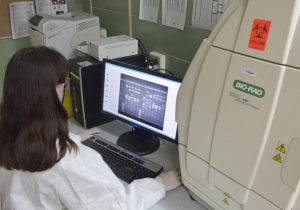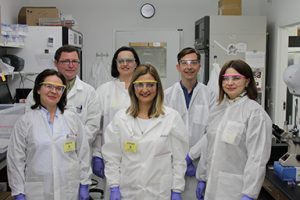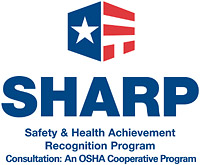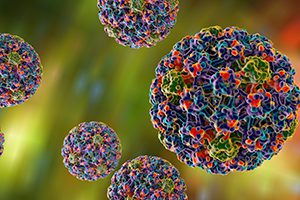Starting in July 2017, Wisconsin will begin screening for Pompe disease as part of a federally funded newborn screening pilot program.
The pilot is an outcome of a 2013 recommendation by the national Advisory Committee on Heritable Disorders in the Newborn and Child (ACHDNC) that Pompe screening be added to state newborn screening panels. As part of the implementation process, it was recommended that pilot studies be undertaken to understand the challenges to implementing this recommendation.
Wisconsin State Laboratory of Hygiene scientists, in conjunction with several pediatric metabolic physician specialists in the state, will be conducting Wisconsin’s Pompe newborn screening trial. The pilot is expected to last one year.
Pompe is a genetically inherited lysosomal storage disease. Children with Pompe have difficulty breaking down glycogen due to a defective alpha-glucosidase (GAA) enzyme; glycogen builds up in cells, particularly muscle cells, leading to poor muscle function. Pompe is a rare disorder, affecting about one in every 10,000-40,000 newborns. The severity of the disease can vary widely, but some affected infants will die in the first year of life if not treated. This is called the “classic infantile” form. In the “late onset” form of the disease, individuals may not become ill until later in childhood, or not until they are adults.
 In 2015 and 2016, the bacteria Elizabethkingia anopheles caused an outbreak in Wisconsin that is still unsolved. But an international scientific collaboration to examine the bacteria’s genomic history gives an answer to one part of the mystery – the 63 people sickened in Wisconsin were all exposed to the same novel strain of bacteria.
In 2015 and 2016, the bacteria Elizabethkingia anopheles caused an outbreak in Wisconsin that is still unsolved. But an international scientific collaboration to examine the bacteria’s genomic history gives an answer to one part of the mystery – the 63 people sickened in Wisconsin were all exposed to the same novel strain of bacteria.
 Rotating Equipment Repair, Inc., (RER)
Rotating Equipment Repair, Inc., (RER) HPV has been around since people have been having people. A mummy with a large abdominal mass was found to be positive for HPV 16. We also know that HPV 16 has played an important role for the current standards of stem cells and cancer research because of the HeLa cell line and Henrietta Lacks. Because of all of this work, we also now have a cancer vaccine.
HPV has been around since people have been having people. A mummy with a large abdominal mass was found to be positive for HPV 16. We also know that HPV 16 has played an important role for the current standards of stem cells and cancer research because of the HeLa cell line and Henrietta Lacks. Because of all of this work, we also now have a cancer vaccine.